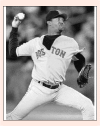Baseball throwing mechanics as they relate to pathology and performance - a review
- PMID: 24149219
- PMCID: PMC3778685
Baseball throwing mechanics as they relate to pathology and performance - a review
Abstract
It is a commonly held perception amongst biomechanists, sports medicine practitioners, baseball coaches and players, that an individual baseball player's style of throwing or pitching influences their performance and susceptibility to injury. With the results of a series of focus groups with baseball managers and pitching coaches in mind, the available scientific literature was reviewed regarding the contribution of individual aspects of pitching and throwing mechanics to potential for injury and performance. After a discussion of the limitations of kinematic and kinetic analyses, the individual aspects of pitching mechanics are discussed under arbitrary headings: Foot position at stride foot contact; Elbow flexion; Arm rotation; Arm horizontal abduction; Arm abduction; Lead knee position; Pelvic orientation; Deceleration-phase related issues; Curveballs; and Teaching throwing mechanics. In general, popular opinion of baseball coaching staff was found to be largely in concordance with the scientific investigations of biomechanists with several notable exceptions. Some difficulties are identified with the practical implementation of analyzing throwing mechanics in the field by pitching coaches, and with some unquantified aspects of scientific analyses. Key pointsBiomechanical analyses including kinematic and kinetic analyses allow for estimation of pitching performance and potential for injury.Some difficulties both theoretic and practical exist for the implementation and interpretation of such analyses.Commonly held opinions of baseball pitching authorities are largely held to concur with biomechanical analyses.Recommendations can be made regarding appropriate pitching and throwing technique in light of these investigations.
Keywords: Baseball; analysis; biomechanics; injury; pitching; throwing.
Figures














References
-
- Aguinaldo A., Buttermore J., Chanmbers H. (2003) Sequential body motion and shoulder joint torque between baseball pitchers of various levels. Available from URL: http://www.sandiegogaitlab.com/chp/pitching_abstract03.pdf - PubMed
-
- Albright J.A., Jokl P., Shaw R., Albright J.P. (1978) Clinical study of baseball pitchers: correlation of injury to the throwing arm with method of delivery. American journal of sports medicine 6, 15-21 - PubMed
-
- Alexander M.J.L. (1994) Overhand throwing mechanics and injuries. Critical Reviews in Physical & Rehabilitation Medicine. 6, 291-315
-
- Alexander R.M. (1991) Optimum timing of muscle activation for simple models of throwing. Journal of Theoretical Biology, 150, 349-372 - PubMed
-
- Altchek D.W., Hobbs W.R. (2001) Evaluation and management of shoulder instability in the elite overhead thrower. Orthopedic Clinics of North America 32, 423-430 - PubMed
LinkOut - more resources
Full Text Sources
